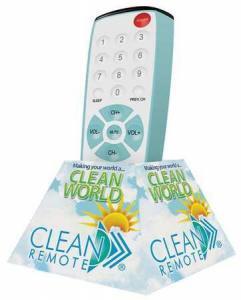How do you make a common product unique? How do you turn generic into gigantic? It’s a question marketers and companies often face, especially if your product is in the commodity or mature phase of the product life cycle. Remember the four phases of the product life cycle: introduction, growth, maturity, and decline? Products, like humans, go through phases in their lives. Each phase is defined by specific characteristics.

While staying in a hotel, I recently noticed a mature product turned young, or revived. It’s the TV remote. Yes, the TV remote, of all things! We all use them and probably have way too many in our homes. It’s that little hand-held box that makes life easier and makes us lazy. We don’t have to get up off the couch or chair, we just point and push to fulfill our flat screen wishes.
At first I thought this was just a regular remote until I noticed both the stand and the product description in the stand. It’s both a commercial and consumer product. This remote is called the “Clean Remote,” because it’s easily cleaned by the hotel staff. If you think of it, just imagine all the germs that would collect on such a device. There are probably hundreds of people using this remote in just one month. Most remotes stay dirty. This remote is clean. Only your germs. More comforting, I guess.
Not bad. This company took a common product and designed it so it’s easily sanitized and cleaned for the next hotel guest. I never would have thought of this. My wife the nurse may have but not me. This company did and created a commercial product as a result.
So before you phase out an old, mature product that’s been around awhile, think twice. There may be some life in what you thought was a fading fancy.
By Stuart Atkins


Leave a Reply